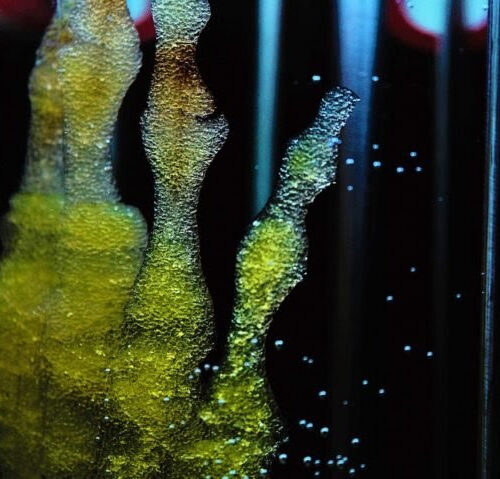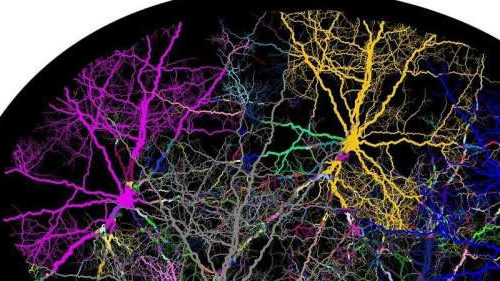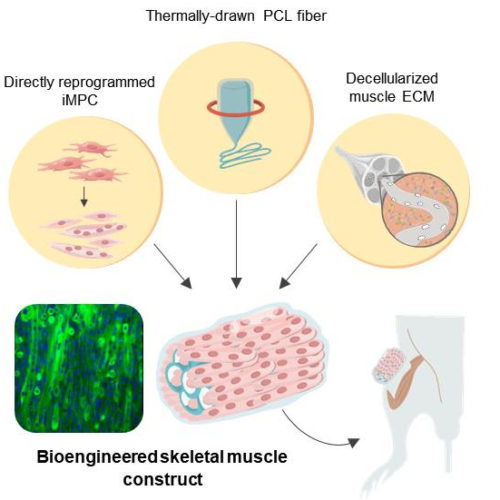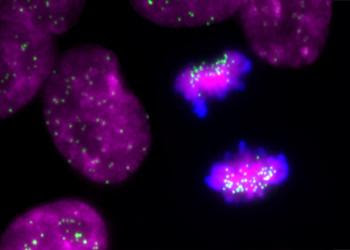The findings on cellular communication hold promise for early human development, disease progression, and aging, as well as organ transplantation and for testing therapeutics. The ability to grow the cells of one species within an organism of a different species offers scientists a powerful tool for research and medicine. It’s an approach that could advance...
Tag: <span>Regenerative Medicine</span>
New platform could help treat neurodegenerative diseases using regenerative medicine
Reviewed by Emily Henderson, B.Sc. Feb 24 2021 Imagine if surgeons could transplant healthy neurons into patients living with neurodegenerative diseases or brain and spinal cord injuries. And imagine if they could “grow” these neurons in the laboratory from a patient’s own cells using a synthetic, highly bioactive material that is suitable for 3D printing....
Chimeric tool advanced for wide range of regenerative medicine, biomedical research applications
by Salk Institute Using fluorescent stains, researchers are able to visualize cells of different species origins in an early stage embryo. Credit: Weizhi Ji, Kunming University of Science and Technology The ability to grow the cells of one species within an organism of a different species offers scientists a powerful tool for research and medicine. It’s an approach that could...
Superstructures formed by ‘walking’ molecules could help create neurons for regenerative medicine
Imagine if surgeons could transplant healthy neurons into patients living with neurodegenerative diseases or brain and spinal cord injuries. And imagine if they could “grow” these neurons in the laboratory from a patient’s own cells using a synthetic, highly bioactive material that is suitable for 3D printing. By discovering a new printable biomaterial that can...
Superstructures formed by ‘walking’ molecules could help create neurons for regenerative medicine
by Lila Reynolds, Northwestern University Credit: CC0 Public Domain Imagine if surgeons could transplant healthy neurons into patients living with neurodegenerative diseases or brain and spinal cord injuries. And imagine if they could “grow” these neurons in the laboratory from a patient’s own cells using a synthetic, highly bioactive material that is suitable for 3-D printing....
Bioengineered hybrid muscle fiber for regenerative medicine
INSTITUTE FOR BASIC SCIENCE IMAGE: SCHEMATIC ILLUSTRATION OF THE 3D SKELETAL MUSCLE-LIKE BIOENGINEERED CONSTRUCTS CREDIT: INSTITUTE FOR BASIC SCIENCE Muscle is the largest organ that accounts for 40% of body mass and plays an essential role in maintaining our lives. Muscle tissue is notable for its unique ability for spontaneous regeneration. However, in serious injuries...
Lab-grown ‘mini-bile ducts’ used to repair human livers in regenerative medicine first
by University of Cambridge Credit: CC0 Public Domain Scientists have used a technique to grow bile duct organoids—often referred to as ‘mini-organs’ – in the lab and shown that these can be used to repair damaged human livers. This is the first time that the technique has been used on human organs. The research paves the way for cell...
Stem cells: new insights for future regenerative medicine approaches
INSTITUTO GULBENKIAN DE CIENCIA IMAGE: CHROMOSOME SEGREGATION IN A HUMAN INDUCED PLURIPOTENT STEM CELL. CENTROMERES IN GREEN AND DNA IN MAGENTA. Stem cells are considered one of the most promising tools in the field of regenerative medicine because they are a cell type that can give rise to all the cells in our bodies and...
Engineered Developmental Signals Could Illuminate Regenerative Medicine
Synthetic ‘Morphogens’ Can Guide Complex Tissue Development, Twin Studies Show. For a tiny embryo to develop into an adult organism, its cells must develop in precise patterns and interact with their neighbours in carefully orchestrated ways. To create complex tissues and organs – from the pattern of rods and cones in the retina to the...
A new cell & gene therapy approach to treat common bleeding disorder
WAKE FOREST BAPTIST MEDICAL CENTER In a new study from the Wake Forest Institute for Regenerative Medicine (WFIRM) researchers have developed an optimized cellular platform for delivering Factor 8 to better treat patients with hemophilia A. Hemophilia A is a genetic disorder caused by a deficiency in, or the absence of, coagulation Factor 8), an...







